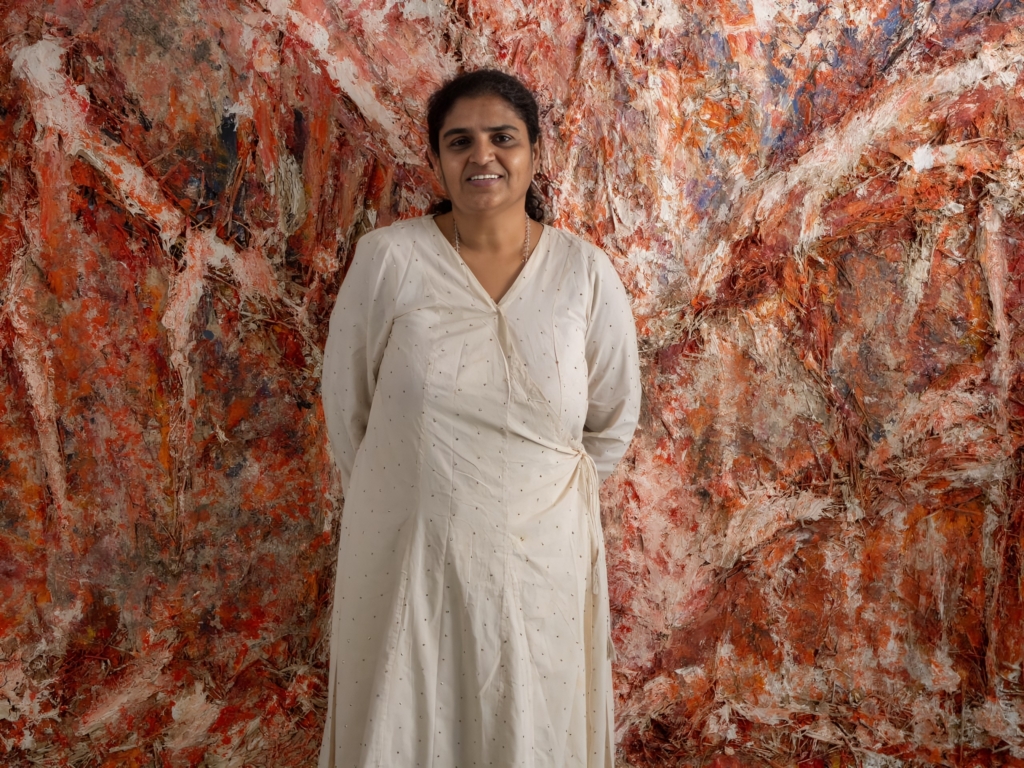“As an artist and the founder of ICONART Gallery in Hyderabad, nature has always been my biggest influence. I work with materials like dry grass, jute, and cotton because they carry a certain rawness—nothing polished, nothing artificial. They speak of how everything is connected, how fragile life is, and how closely we’re tied to the land around us.
That connection goes back to my childhood. I was born into an agricultural landlord’s family in Telangana. Some of my earliest memories are of the dry soil, thorny bushes, and the seasonal water bodies that would appear and disappear depending on the rains. At the time, I didn’t see it as something significant, but over the years, those landscapes, the rhythm of nature, and that closeness to the land shaped how I see the world and how I express myself through art.

For me, art has never been just about beauty. It’s about asking questions, starting conversations, and finding ways to bring people closer to nature, to each other, and to things we often overlook. This way of thinking also shaped how I approach curating. Whether it’s showing the fading beauty of Telangana’s rocks, lakes, and trees, or creating exhibitions around women’s rights, environmental concerns, or the life of the girl child, it all comes from a place of personal concern and care.
ICONART has been around for over 15 years now. But to me, it’s never been just a gallery. It has been a space to support and guide artists, especially younger ones. My background as a research scholar and art critic helped me notice emerging talent early on, and that gave ICONART its own identity. Being both an artist and a founder gave me the freedom to experiment and go beyond usual formats, to take art into places where people actually live and work.

One of the most memorable experiences was our artist residency program. For three years, 25 artists came together, shared ideas, and grew alongside each other. It was the only one of its kind in Hyderabad at the time. But what I’ve always enjoyed most is taking art into public spaces: hosting a photo exhibition in the narrow lanes of Lad Bazaar, floating messages about water conservation on sails at Hussain Sagar, curating installations among ancient rock formations, and even exploring women’s issues through art in Irani cafés and auto garages. These weren’t just shows. They were experiences that stayed with people.

Over the years, I’ve curated works around everything from environmental loss to the uncertainty of the pandemic, from personal reflections to the messiness of city life. Each project has been a way to reach people, to get them to feel something and maybe think a little differently.

Going forward, I want to continue curating in the open, by lakes, under trees, on the same kind of land I grew up on. I want art to be more accessible, more direct, and part of everyday life. Because I’ve never believed that art belongs only inside galleries. It should live and move among people, like those seasonal water bodies that come quietly, leave quietly, but change everything while they’re here.”
